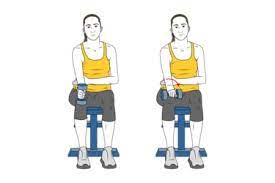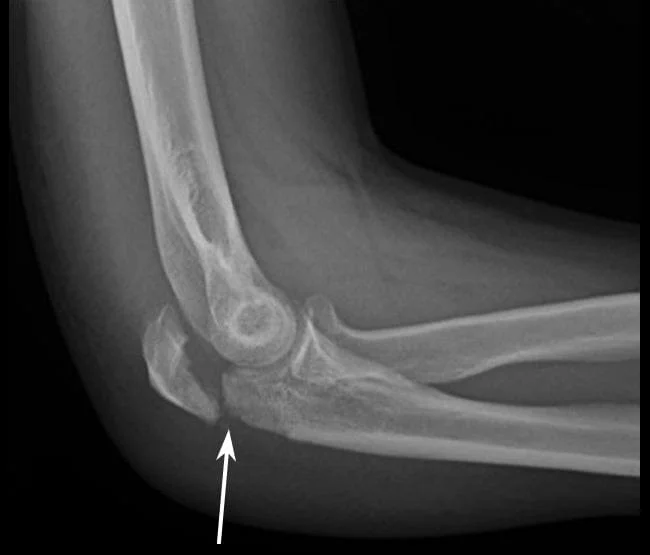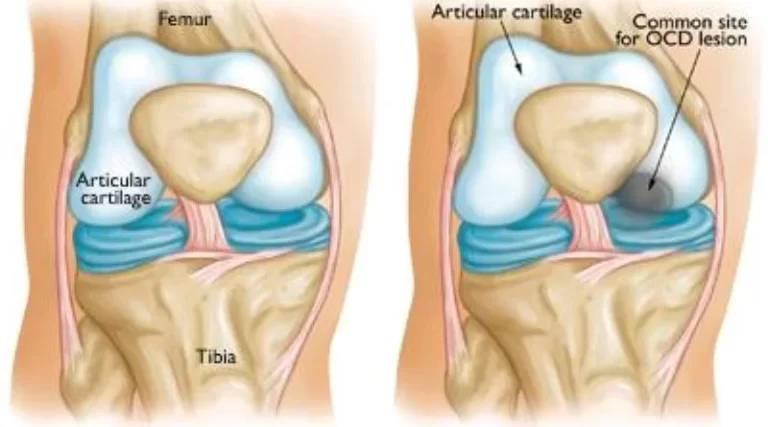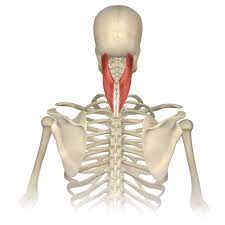Elbow Fracture
Table of Contents
Introduction
An Elbow Fracture is a common orthopedic injury that occurs when one or more of the bones that make up the elbow joint break or crack. The elbow is a pivotal joint that enables the bending and straightening of the arm and is composed of three main bones: the humerus (upper arm bone), the radius, and the ulna (forearm bones). Fractures in any of these bones can significantly impact a person’s ability to use their arm and perform everyday tasks.
Elbow fractures can result from a variety of causes, including falls onto an outstretched arm, direct blows to the elbow, or high-impact accidents. The severity and type of fracture can vary widely, from small hairline cracks to more complex, displaced fractures that require surgical intervention.
This introduction provides a general overview of elbow fractures, but it’s important to note that there are many different types and treatment approaches depending on the specific nature of the injury. Prompt diagnosis and appropriate medical care are essential to ensure the best possible outcome for individuals who have sustained an elbow fracture.
Definition
Falls, twisting injuries, and blunt force trauma are all possible causes of elbow fractures. Depending on the degree of the break, elbow fractures can be treated surgically or non-surgically.
Types of Elbow Fracture
Elbow fractures come in three basic categories. These consist of:
Olecranon fractures:
The olecranon, the sharp end of the elbow, is a component of the ulna, one of the two forearm bones. Since it is not covered or protected by muscles, the olecranon is particularly prone to fracture.
Fractures of the radial head:
The radial head is connected to the humerus, the upper arm bone. When someone tries to use their arm to break a fall, they frequently sustain this kind of fracture. As a consequence, the radial head pushes into the humerus and causes a fracture.
Falls, twisting injuries, and blunt force trauma are all possible causes of elbow fractures. Depending on the degree of the break, elbow fractures can be treated surgically or non-surgically.
Fractures of the distal humerus:
The distal humerus joins the shoulder to the elbow. Although they are uncommon, fractures of this bone can happen when someone falls on a bent elbow or experiences trauma. Dislocation, which happens when all the ligaments surrounding the elbow joint break, and separate the bones from their hinge, is a possibility with more serious olecranon injuries.
The triple triad of an olecranon fracture, a radial head fracture, and a dislocation is possible. The hinge joint must be replaced surgically, and any damaged bones and torn ligaments must also be treated.
Prevalence
The prevalence of elbow fractures is high, particularly in youngsters. The American Academy of Orthopaedic Surgeons estimates that elbow fractures account for 10% of all paediatric bone fractures.
Anatomy
Three bones make up the elbow joint at your elbow:
- The upper arm bone, or humerus
- Found on the thumb side of the forearm, the radius
- The pinky-side forearm bone, or ulna
- Like a hinge, the elbow joint may bend and straighten. The capacity to turn your palm up, as when receiving change from a cashier, or down, as when typing or playing the piano, is crucial for forearm rotation.
All three bones are represented in various ways in the elbow:
- The lowest portion of the humerus is called the distal humerus.
- It serves as the spool around which the forearm bends and straightens and creates the top portion of the elbow.
- The knobby end of the radius where it connects to the elbow is called the radial head.
- When you bend your arm, it moves up and down the distal humerus’s front, and when you move your wrist up and down, it rotates around the ulna.
- The area of the ulna known as the olecranon cups the humerus’s lower end to provide a hinge for the elbow.
- Because there is only a thin layer of tissue covering the bony olecranon, it is simple to feel it beneath the skin.
- The bone structure of the elbow, together with ligaments, tendons, and muscles, all work to hold it together. The elbow joint is crossed by three main nerves.
Causes of Elbow Fracture
- Trauma, such as an accident or sports injury, can cause an elbow fracture.
- This kind of fracture can also happen when someone tries to break a fall by using their arm extended.
- The humerus, radius, and ulna are the three primary bones of the elbow.
- The radius bone’s head and neck are located inside the elbow joint, and it runs the whole length of the forearm from the wrist to the elbow.
- The head of the ulna is located in the wrist, and the cup-shaped portion in the elbow is known as the olecranon.
- The ulna also extends from the elbow to the wrist.
- The elbow is where the distal end of the humerus, which begins at the shoulder, is located.
- Finding the broken bone’s position is crucial since it will influence the right rehabilitation and therapy. Multiple bones may break simultaneously in extreme situations.
Symptoms of Elbow Fracture
Some elbow fractures result in sharp, immediate pain and obvious deformity, while others may show softer symptoms. Typical signs of an elbow fracture include:
- swelling close to the elbow’s back.
- The elbow is stiff.
- Bruising on the arm or elbow.
- Your hand or fingers are numb or feeble.
- sensitivity to touch.
- suffering when you rotate your forearm.
- experiencing a “pop out” of the joint in your elbow.
Diagnosis of Elbow Fractures
A Penn orthopedic specialist or surgeon will evaluate your elbow and talk to you about your recent accident to determine whether you have an elbow fracture. To determine the location of the fracture and the severity of the break, they will need sophisticated imaging studies. In order to provide an accurate diagnosis and develop the most effective treatment strategy, our musculoskeletal radiologists are professionals in reading and interpreting images from highly specialized diagnostic tests and equipment.
These imaging diagnostic tests consist of:
- Musculoskeletal ultrasonography,
- MRI,
- X-ray
Treatment of Elbow Fracture
These fractures require a thorough examination by a medical practitioner, the use of a splint, brace, or sling, and rest as first treatments. Pain and swelling can be reduced with medication.
Surgery is more likely to be needed for fractures that are malpositioned or unstable. In order to reduce the danger of infection, immediate surgery is required if a fracture is open (the skin has broken over the fracture).
Treatment options include non-surgical methods such as a detachable sling, brace, or an immobilizing castor when the bones are stable or pose little risk of shifting out of position. The elbow is unique in that moving or exercising simple, non-displaced fractures early, even while the bones are still healing, is safe and helpful in preventing stiffness.
When treating elbow fractures, age plays a significant role as well. Even with minor fractures, children are more likely to require casts because they preserve the joints while they heal and because they may not be aware of the dangers associated with some activities. The likelihood of elbow stiffness in a youngster is smaller than in an adult, who is considerably more likely to have it.
To increase the range of motion and reduce the likelihood of developing elbow stiffness, rehabilitation under the guidance of your doctor is frequently employed. Along with exercises, scar massages, ultrasounds, heat, ice, and splints that extend the joint, this may entail working with a hand therapist.
Treatment of Elbow Fractures Without Surgery
If an elbow fracture is not displaced, most cases may be managed with conservative methods like:
- Elevation of the elbow to help reduce swelling
- Icing
- arm sling or wrap immobilization during the duration of bone healing
- prescription drugs for pain or inflammation
- Range-of-motion exercises and physical treatment under a physical therapist’s direction
Surgery for Elbow Fractures
All difficult elbow fracture procedures, including those for non-union fractures (bones that have not healed properly) and other serious bone breaks, are expertly handled by our orthopedic surgeons. Surgery is not usually necessary for minor fractures, but if your fracture dislocates or fails to heal, your doctor will probably conduct surgery to fix it. We have expertise in ministering elbow fractures that need multiple surgical procedures at the same time, including bone-grafting and reconstruction and/or transfer of ligaments and tendons.
Surgical procedure
Internal fixation and Open Reduction Surgery
If there is a complicated fracture or a dislocation of the elbow’s bones, surgery is necessary. The bones are placed back in place using an open reduction and internal fixation surgical operation.
Some specialized hardware, such as screws, plates, or pins, is used by our orthopedic surgeons. To guarantee that the bones are mended properly, this unique hardware is employed to hold the bones in place. In some situations, we restore soft tissues like ligaments and tendons using microsurgical methods and bone grafting.
Total Elbow Replacement Surgery
To address serious damage brought on by an elbow fracture, we have extensive expertise in conducting whole elbow replacements. A total elbow replacement involves removing all of the elbow’s natural bone and soft tissue and replacing every component with prosthetic ones. Both “linked” and “unlinked” surgical techniques are used in this kind of procedure.
The connected technique reconstructs the anatomy of the elbow by inserting synthetic stems into the ulna and humerus and joining them with a hinge.
For patients who have experienced serious elbow fractures that are challenging to cure, total elbow replacement enables the restoration of movement and eliminates or significantly lowers discomfort.
Non-union Surgery for Elbow Fractures
A shattered elbow bone that did not heal properly is known as a non-union elbow fracture. Surgery can be necessary for treatment to get rid of any infections and to better stabilize the fracture. To encourage bone development, a bone transplant can be necessary.
Our surgeons use vascularized bone grafting to complete difficult non-union surgical repairs. Vascularized bone grafts replace damaged bone tissue with viable bone tissue transplants. We are among the few medical facilities in the country that do vascularized bone grafting, making us specialists in this highly specialized surgery.
Elbow Fracture Surgery Recovery
After surgery, you’ll need to get lots of rest and wear a splint to keep your arm and elbow immobile. If at all possible, keep the elbow elevated and apply ice to the region to assist in reducing swelling. Non-prescription drugs can be used to aid in pain management. We provide a cutting-edge program for managing pain that successfully relieves discomfort while reducing reliance on drugs. Pain reduction facilitates faster healing. Your physical therapist will suggest activities to help you regain mobility and function while you recuperate.
Everyone’s recovery after elbow fracture surgery is unique and may take many months. Talk to your doctor about the steps involved in your rehabilitation.
The physiotherapy treatment
In the aftermath of an elbow fracture, physical rehabilitation is frequently used. This may hasten the healing process and help the elbow joint regain its range of motion. It also strengthens and increases the range of motion of your arm, shoulder, and wrist in addition to your elbow.
Physical treatment can significantly reduce the loss of joint mobility that might have an impact on your employment and day-to-day activities.
The objectives of physical therapy for a fractured elbow are covered in this article, along with the kinds of exercises you can anticipate performing while you recuperate.
Stiffness that restricts the range of motion is a significant issue with an elbow fracture. Sometimes, even after the bones have healed, this stiffness lingers. Your doctor might suggest that you begin physical therapy shortly after the injury in order to avoid this.4
You will work together with your physical therapist to get your elbow and arm functioning normally once more. To assist you in swiftly going back to your regular activities, they could employ a variety of physical therapy techniques.
Range-of-Motion Training
Restoring the normal range of motion (ROM) is one of the primary objectives of physical therapy following an elbow fracture. You can bend your arm or flip your hand over thanks to the intricate joint in your elbow. You require a full range of motion in the elbow and forearm to regain normal use of your arm.
Generally speaking, greater and quicker outcomes are seen when ROM treatment is started earlier. According to a 2016 research, even those over 65 needed fewer treatment days when they began ROM exercises as away after becoming immobile. Physical treatment took 17 days for those who put it off vs. 6.5 days for those who started early.
Your physical therapist could have you wear a dynamic splint if your loss of range of motion is significant. This spring-loaded splint is worn all day long. Your elbow joint receives a low-load stretch, which enhances the range of motion. The splint might help you bend and straighten your elbow more easily.
People with elbow fractures frequently perform the following four ROM exercises:
Elbow flexion-
which involves gently applying pressure while bending your arm as far as feasible.
Elbow extension-
you extend your elbow as far as it will go while applying light pressure.
Supination –
Of the forearm occurs when you bend it palm-side up while applying light pressure.
Elbow pronation-
In which you turn your forearm palm-side down while applying little pressure.
Strength Training
You might be unable to use your arm following an elbow fracture due to discomfort and edoema in the affected area. Your elbow, wrist, and hand may be restricted if you’re wearing a sling.
The muscles surrounding the surgical incision may require time to recover if you’ve undergone an ORIF. Your elbow, shoulder, wrist, and hand may see a considerable loss of strength during this period of inactivity.3
Your physical therapist may also make sure your sling fits properly and instruct you on how to wear it. Additionally, they are able to recommend hand exercises. Exercise for your hands can guarantee that your grip strength is restored to its pre-injury levels.
Following an elbow fracture, strengthening exercises might include:
Gripping

Exercises for improving grip using a strong squeeze ball
Isometric dumbbell holds-
in which you maintain your forearm’s tension while holding a dumbbell.
Resistance band bicep curls-

in which you grip the opposite end of a resistive band while controlling the bend of your elbow.
Weighted forearm pronation and supination-

in which you rotate your forearms while holding a light dumbbell palms-side up and then palms-side.
The intensity and length of elbow strengthening exercises should advance according to a program set by your physical therapist.
Management of Pain
You could get elbow swelling after a fracture. Applying cold or electrical stimulation (e-stim) can help you control the discomfort and swelling, according to your physical therapist. Nonsteroidal anti-inflammatory medicines (NSAIDs), such as Aleve (naproxen) or Advil (ibuprofen), can also be helpful over the counter.
Scar Tissue Control
Your physical therapist can assist you in managing any scar tissues that may have developed if you underwent an ORIF. Massage and mobilization of scar tissue can enhance scar mobility and stop tissue retraction (tightening). You can learn self-massage techniques from your therapist as well.
Stretching scar tissue with kinesiology tape is a more recent technique used by physical therapists to promote tissue remodeling.
Ongoing Care
Within four months, the majority of people ought to be able to resume their regular activities. Full recovery may take up to a year for some people. After this period, it’s typical to still experience a slight loss of movement. The strength and range of motion exercises you acquired in physical therapy should be continued for this reason.
Following physical treatment, continue your at-home exercise regimen. Make careful to ask your doctor or other medical professional what results are typical in your situation.
FAQ
How long does it take an elbow fracture to recover?
Your injury’s severity will determine how long it takes you to heal. People with elbow fractures will often wear a cast or splint for three to six weeks minimum. Even while complete recovery can take a year or longer, many patients can resume their regular activities in around four months.
Can you walk about with an elbow fracture?
What to anticipate following an elbow fracture. You can move your elbow without risking harm if you have this kind of stable elbow fracture. Your elbow will first feel painful and rigid. Even if it aches, it’s still vital to keep moving it.
Can a broken elbow heal on its own?
You shouldn’t handle this type of injury on your own. Anyone who may have broken their elbow needs to consult a doctor as soon as possible. If the injury is not adequately treated, there is a chance of irreversible harm.
Can an elbow fracture be recovered without surgery?
Many persons with fractures of the shoulder or elbow don’t require surgery. While the fractured bone or bones heal, orthopedic specialists at NYU Langone recommend immobilizing the damaged arm and joint.
How do you sleep while your elbow is broken?
In the first several days following the injury, raise your arm on cushions whenever you sit or lie down. Keep your elbow higher than your heart level. This will aid in minimising edoema. Follow the directions for the workouts to maintain arm strength.
References
Elbow (Olecranon) fractures – OrthoInfo – AAOS. (n.d.). https://orthoinfo.aaos.org/en/diseases–conditions/elbow-olecranon-fractures/
Professional, C. C. M. (n.d.-b). Elbow fractures. Cleveland Clinic. https://my.clevelandclinic.org/health/diseases/22050-elbow-fractures
Elbow Fractures: Symptoms & Treatment | The Hand Society. (n.d.). https://www.assh.org/handcare/condition/elbow-fractures







